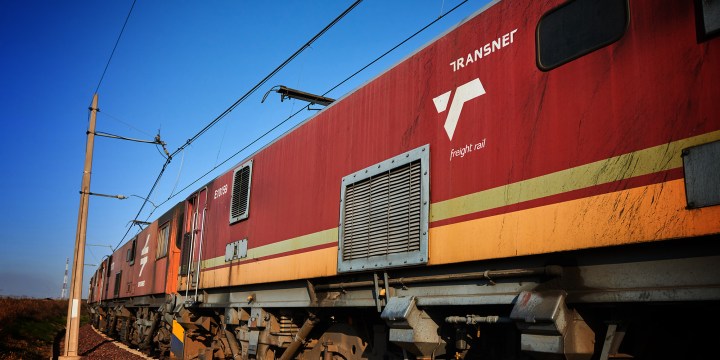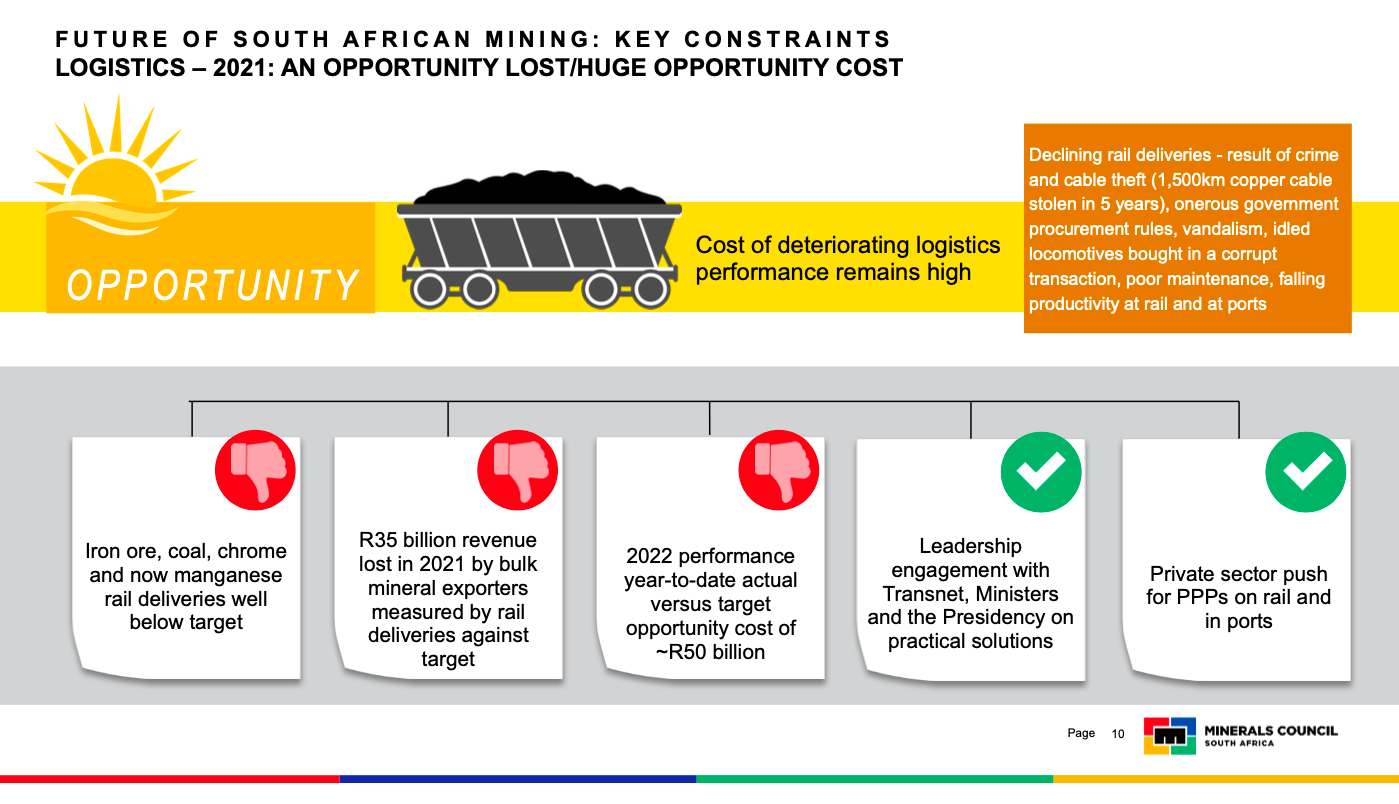JOBURG MINING INDABA
Flailing Transnet has cost South Africa R50bn in lost mineral exports this year

Transnet’s woes have cost South Africa R50bn in lost exports of bulk commodities like coal and iron ore so far in 2022, Roger Baxter, the CEO of the Minerals Council SA, told the Joburg Mining Indaba. That follows R35bn in lost exports last year.
The costs of state failure keep mounting.
In a presentation to the Joburg Mining Indaba on Wednesday, Roger Baxter, the CEO of the Minerals Council SA, said that Transnet’s ongoing woes represented a lost opportunity cost of R50-billion in 2022 to date. This was measured against the export targets set by companies. In 2021, the loss measured by railway deliveries versus targets was R35-billion.
Like rolling blackouts, the situation is simply getting worse.
“Iron ore, coal, chrome and now manganese rail deliveries remain well below target,” Baxter said in the presentation delivered to an audience of industry executives, fund managers, bankers and others.
So, since the start of last year, the cost of lost exports to infrastructure going off the rails is R85-billion and counting.
Visit Daily Maverick’s home page for more news, analysis and investigations
This was a common theme. Andre Joubert, chief executive of the ferrous division at African Rainbow Minerals, told one session at the indaba that he wanted to move 4.6 million tonnes of manganese from a newly minted operation but Transnet could only commit to 4 million tonnes.
This is a big deal, as commodity exports play a crucial role in South Africa’s ailing economy.
PwC’s annual report on South Africa’s mining sector, released earlier this week ahead of the indaba, showed that minerals and metals accounted for more than half of South Africa’s export revenues in 2021.
Surging commodity prices “provided a significant positive demand shock to the economy since the early months of the Covid-19 pandemic in 2020”, the SA Reserve Bank noted this week in its bi-annual Monetary Policy Review. That contributed to seven consecutive quarters of surpluses on South Africa’s current account balance, underpinning the rand, which in turn gave the SA Reserve Bank room to hold interest rates steady until November of last year.
That surplus unexpectedly fell into a deficit in the second quarter of this year on a surge in dividend outflows, in large part based on profits generated by the mining industry. What the commodities cycle gives it can also take away.
The commodities cycle and the cash generated by exports also threw a lifeline to Treasury in the form of a massive increase in the taxes and royalties the mining industry forked out.
The wider point here is that a loss of commodity exports has consequences for the wider economy. It’s another own goal scored by a failing state. DM/BM
















Comments - Please login in order to comment.